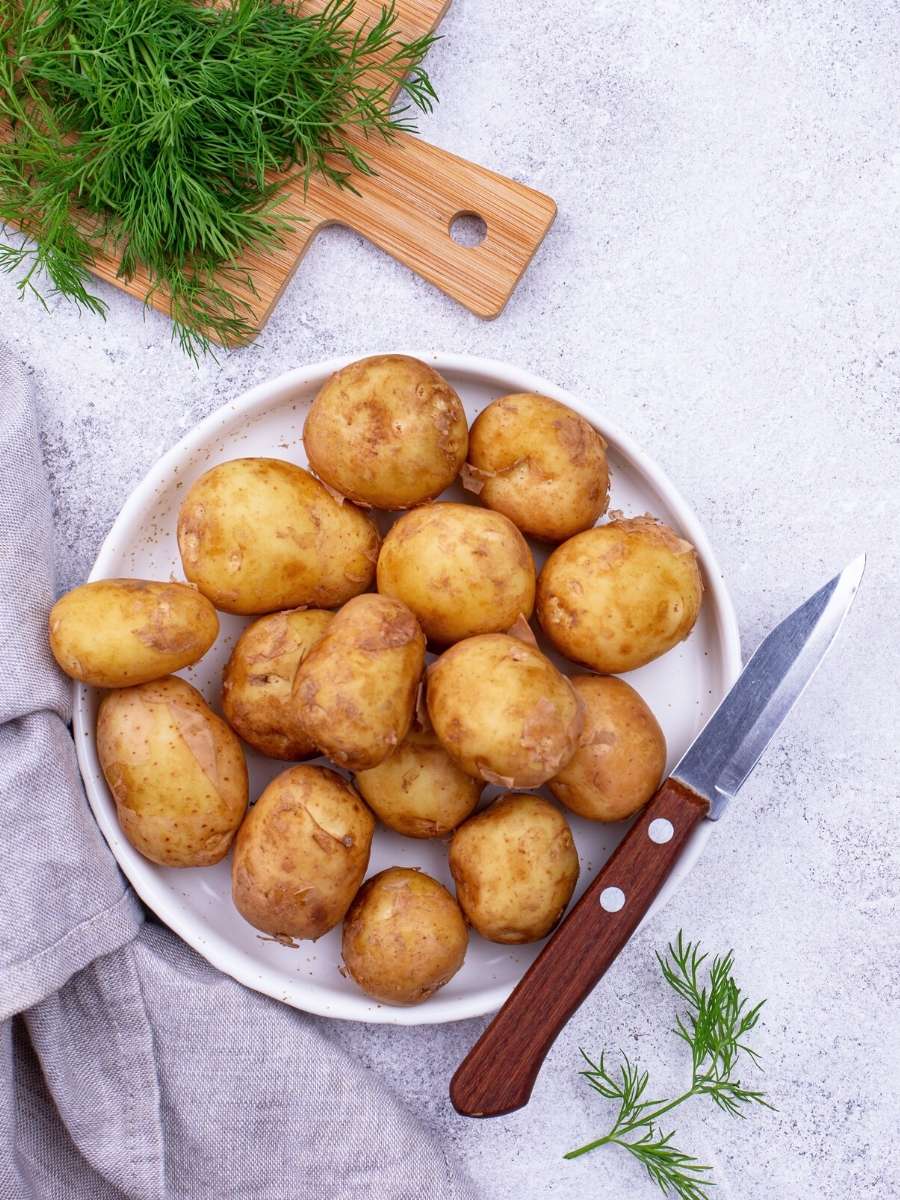Resistant Starch 101: How to Harness Its Health-Boosting Potential

You can create resistant starch by cooking and then cooling potatoes, rice, and other foods to help you feel fuller and improve digestion. Resistant starch can reduce the amount of carbohydrates you absorb from certain foods and improve overall health.

When it comes to healthy eating, starch often gets a bad reputation. Many carbohydrate-rich foods in our diet contain starch, which is essentially long chains of glucose, also known as sugar.
Highly refined starches like white flour, pretzels, white bread, white rice, and pasta are often blamed for weight gain, overconsumption, insulin resistance, and type-2 diabetes. However, not all starches are created equal.
What if I told you there’s a special kind of starch that actually improves digestion, prevents certain diseases, and promotes healthy weight loss?
There is! It’s called resistant starch.
What Is Resistant Starch?
Resistant starch is a unique type of starch that resists digestion in the small intestine and reaches the colon relatively unchanged. Unlike regular starches, which are broken down into glucose by digestive enzymes, this type of starch remains intact as it passes through the digestive system. Once in the large intestine, it serves as food for beneficial gut bacteria, which ferment it and produce butyrate, a short-chain fatty acid.
Butyrate provides energy to the cells lining our gastrointestinal tract and offers various health benefits. Foods rich in resistant starch include whole grains, cooked and cooled rice or potatoes, plantains, green bananas, and more. Incorporating this type of starch into your diet can help support healthy digestion and overall well-being.
Unlike highly refined starches that cause blood sugar spikes, these types of starches pass through your digestive system unchanged. It can be incredibly beneficial for your health because it functions similarly to soluble fiber.
Cooked Then Cooled Potatoes & Rice Contain Resistant Starch
For years the health world has told people to avoid things like potatoes and white rice, but we now know these things are absolutely ok in moderation, especially when they are cooked and cooled.
This means that a herby potato salad should always be in your rotation. Bonus points for if you leave the potato skins on for extra fiber and nutrients, too.
I also suspect that this is why I tend to not feel super bloated after I eat sushi since the rice has usually been cooked and then cooled, but I can’t find data to back this up. The vinegar added to sushi rice may also contribute to that.

Health Benefits of Resistant Starch
- Decreased risk of disease: When resistant starch enters your large intestine, bacteria convert it into butyrate, which is a short-chain fatty acid. Studies show that the more short-chain fatty acids that are found in the colon, the lower the risk of both colon cancer and cardiovascular disease.
- Increased fat burn: Studies show that meals containing 5.4% of resistant starch significantly increase the body’s ability to burn fat.
- Improved gut health: Resistant starches foster the growth of good gut bacteria, which in turn aids digestion, boosts your immune system, supports your endocrine system, and does a whole lot more. (Not to mention, gut health is intrinsically linked to mental health.)
- Reduced insulin and blood sugar spikes: There is some research linking the consumption of it to lower blood sugar and fewer insulin spikes.
- Mineral absorption: A lot of essential minerals are absorbed in our large intestines, and having a healthy supply of this type of starch strengthens such absorption.
- Weight loss: Resistant starches increase satiety and feelings of fullness, which consequentially aids in weight loss. They are also great for metabolic health.
Adding Resistant Starch To Your Diet
Here are some of the easiest ways to add resistant starch to your diet.
- Cooked and cooled white rice: If you cook and then cool white rice, it will easily create resistant starch—you don’t even need to do anything special. Just cook it and let it cool completely. If you’re worried about having to eat cold rice, don’t be. You can reheat the rice without destroying the resistant starch.
- Cold potatoes: Many people eat their potatoes warm (myself included), but doing so sacrifices the potato’s fat-fighting powers. To maximize their resistant starch, bake your potatoes in an air fryer or oven, allow them to cool, then cut them into smaller pieces. Afterward, you can whip up a batch of this drool-worthy Herby No-Mayo Potato Salad.
- Raw oats: Whole rolled oats are terrific for making homemade energy bites or overnight oats.
- Legumes: Beans, lentils, chickpeas, and other legumes are excellent sources of resistant starch. They are also packed with fiber and protein.
- Green bananas and raw plantains: Sure, unripe bananas aren’t as sweet as the yellowy-brown ones, but they are loaded with resistant starch. To help a bit with the taste, try tossing them in this Pineapple Spinach Smoothie Recipe (Tastes Like Candy!).
Healthy Recipes With Resistant Starch
If you’re ready to add this type of starch to your diet, here are some super simple ways to do so:




